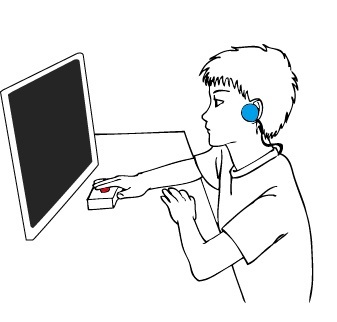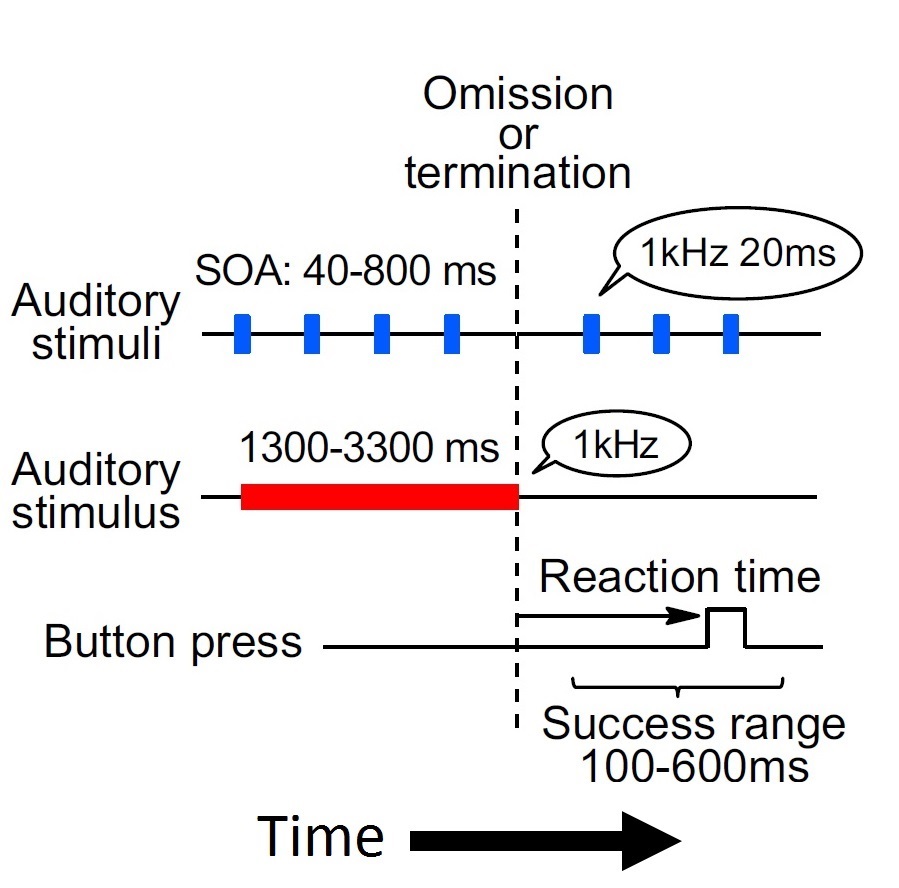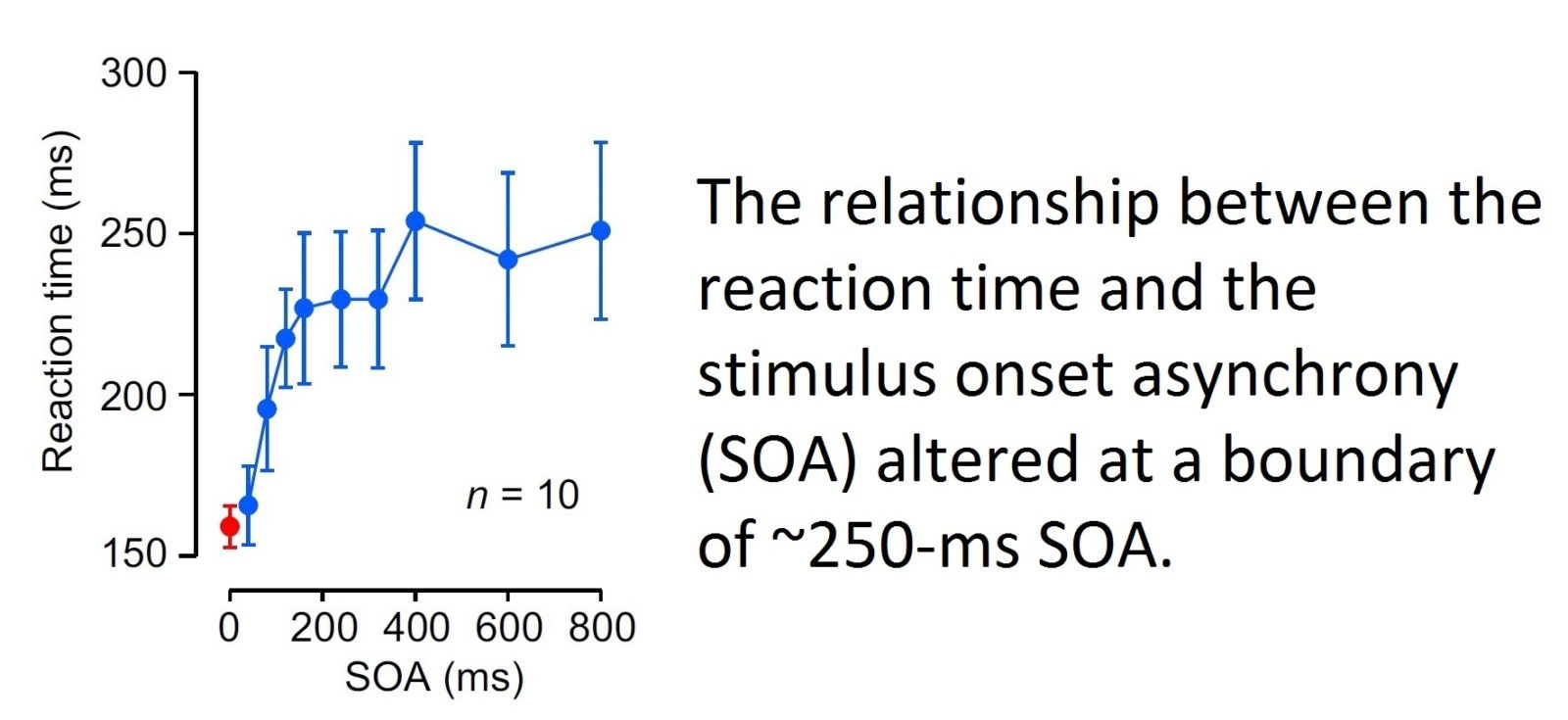Two Neural Mechanisms for the detection of a Rhythm Change
Research Press Release | March 07, 2016


Participants quickly pressed a button in response to a single omission of isochronously repeating sound (blue), or the termination of a continuous sound (red).

|
Key Points |
・We performed psychophysical experiments to understand the mechanism of detecting a single omission of periodic sounds. ・Temporal grouping of discrete sounds in the sequence contributed at tempos > 4Hz, while timing prediction contributed at lower frequencies. ・Changes in reaction time at the boundary of 4Hz were found for auditory, visual and haptic stimuli, suggesting the existence of a unified mechanism for different sensory modalities. |
|
|
Outline |
Since many regions of the brain are implicated in the perception of time, elucidation of the underlying mechanisms help us to understand and evaluate the functions of each brain region. Although humans are highly sensitive to the changes in musical rhythms, how we perceive them remains unclear. Participants were asked to detect a single omission of isochronously repetitive sounds. When inter-stimulus interval was less than 250 ms, the sequence of discrete sounds was temporally integrated and a brief stop of sound stream was detected. When the inter-stimulus interval was longer, the timing of each next stimulus was predicted and the deviation from this prediction was detected. This difference, which occurred at a boundary of approximately 4Hz, was also found in vision and haptic sense. The brain seems to automatically switch between these two strategies, regardless of our awareness. This research was supported in part by the Ministry of Education, Culture, Sports, Science, and Technology (Scientific Research on Innovative Areas: “The Science of Mental Time”), the Takeda Science Foundation, the Japan Agency for Medical Research and Development (AMED). |
|
|
Anticipated Outcomes |
Recently, we trained monkeys to perform a similar behavioral task and found that the lateral cerebellum is involved in temporal prediction (Temporal measurement: discovery of cerebellar neurons that feel rhythm). Now, we have demonstrated that there are two different mechanisms, namely, grouping and prediction, and have revealed their temporal limitations. In the future studies we will examine the underlying mechanism of temporal prediction by exploring neuronal activities in the cerebellum, basal ganglia, frontal and parietal cortices in animals performing the task. We also expect that our behavioral paradigms could be used to develop clinical tests for diseases of the cerebellum and the basal ganglia. |
|
| Inquiries |
Masaki TANAKA, Professor Department of Physiology, Systems Neuroscience Laboratory Hokkaido University Graduate School of Medicine masaki[at]med.hokudai.ac.jp |
|
|
Japanese Link |
リズムの乱れを知る2つの方法 (02.08.2016) | |
|
Publications |
Two different mechanisms for the detection of stimulus omission, Scientific Reports (02.05.2016) | |
